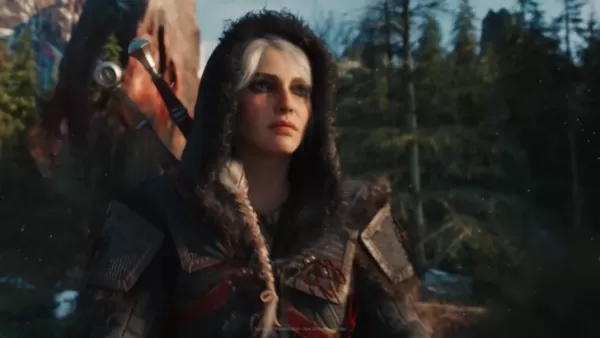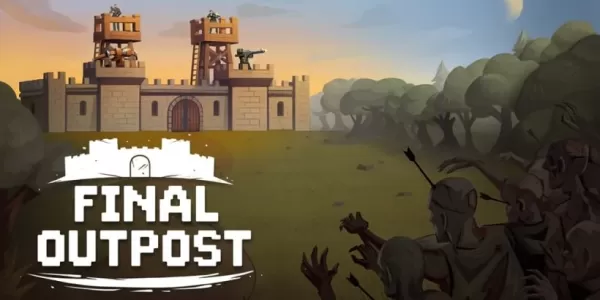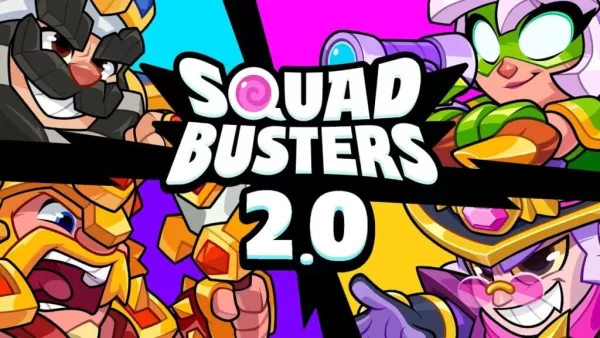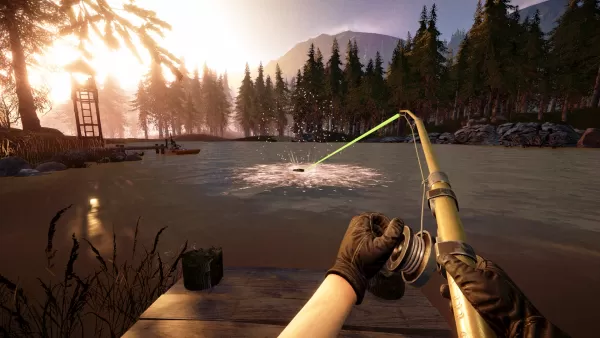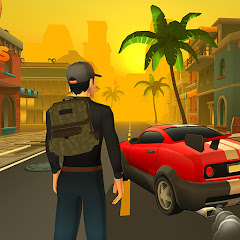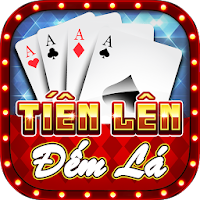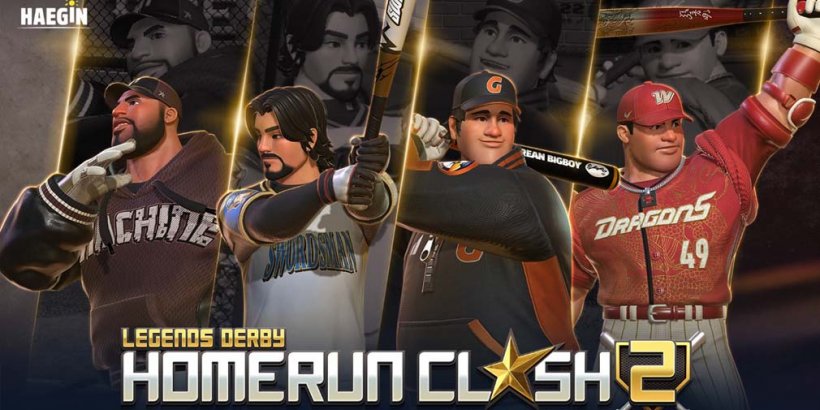Monster Hunter Weapons: A Historical Overview
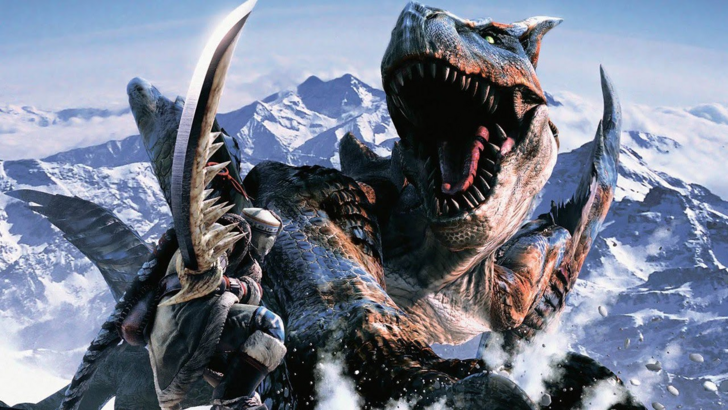
Monster Hunter is renowned for its diverse weapon types and captivating gameplay, but did you know that even more weapons haven’t been included in the newer games? Dive into the history of the weapons in Monster Hunter and discover more about this iconic series.
← Return to Monster Hunter Wilds' main article
History of Weapon Types in Monster Hunter

Monster Hunter has been captivating gamers for over two decades, since the first game was released in 2004. One of the series' most celebrated features is the variety of weapon types available to players. Monster Hunter Wilds will offer fourteen distinct weapon types, each with unique strengths, weaknesses, movesets, and mechanics that players must master.
With the introduction of new tools, moves, and mechanics, the evolution of weapons like the Great Sword from its initial version to the latest is remarkable. Moreover, there are even more weapons from the older games that were never released in the West. Let's explore the rich history of Monster Hunter, focusing on the most crucial piece of a hunter's arsenal—their weapon.
First Generation
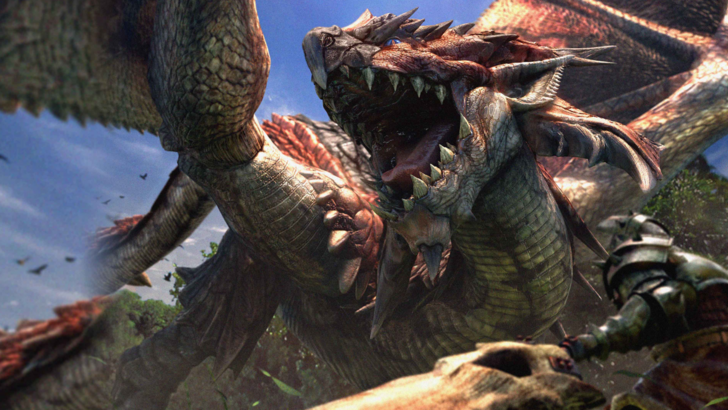
The weapons introduced in the original Monster Hunter game and its various versions are considered the OGs of the series. These weapon types have evolved significantly, with updated movesets, mechanics, and more.
Great Sword

The Great Sword is arguably the most iconic weapon in the franchise, present since the first game in 2004. Known for its high damage output, it comes with the trade-off of slow movement and attack speed, reminiscent of a Gravios charging at a hunter. The weapon can also be used as a shield, at the cost of stamina and sharpness.
In the initial game, the Great Sword was designed around hit-and-run tactics, requiring precise spacing for effective swings. Though its attacks could be chained and looped infinitely, the slow animations made this impractical. A unique feature was the increased damage when hitting a monster with the middle of the blade.
Monster Hunter 2 introduced the Charged Slash, a move that became a hallmark of the Great Sword. Hunters could charge the weapon by holding the attack button for up to three levels, each level delivering stronger hits. This move has remained a key reason for its popularity.
Subsequent games built on this charging mechanic, adding more finishers and ways to access charged attacks. The combos became more fluid and efficient, exemplified by the shoulder tackle attack in Monster Hunter World, which allowed hunters to withstand attacks and transition into a charged attack more quickly.
Overall, the Great Sword offers a low-skill floor but a high-skill ceiling, making it accessible yet challenging to master. The key to excelling with this weapon lies in maximizing damage through the True Charged Slash during brief openings.
Sword and Shield
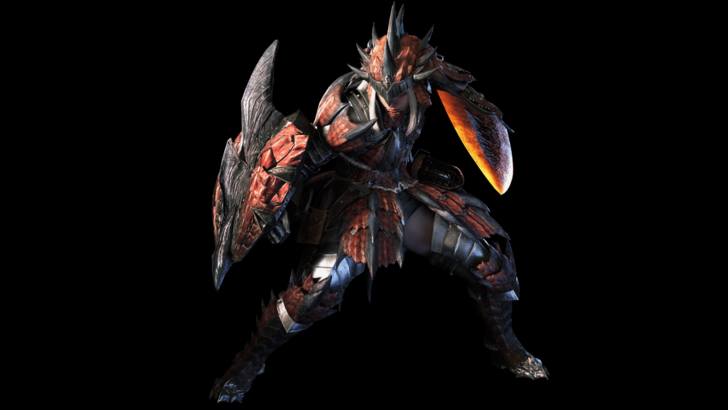
The Sword and Shield embodies versatility, offering a balanced setup with relatively low single-strike damage but quick combos, good mobility, and utility. Initially considered a beginner's weapon due to its straightforward gameplay, it has evolved over the series with added mechanics and attacks.
In its first iteration, the weapon was centered around quick slashes, combos, and great mobility while drawn. Monster Hunter 2 introduced the ability to use items without sheathing the sword, enhancing its utility.
Later generations further expanded its moveset, including the shield bash combo in Monster Hunter 3, backstep and jumping attacks in Monster Hunter 4, and the Perfect Rush combo and aerial finishers in Monster Hunter World and Monster Hunter Rise.
Despite its short range and lower damage output, the Sword and Shield is a jack-of-all-trades weapon. It offers infinite combos, quick attacks, built-in evasion with the backstep, impressive finishers, and a last-resort block. Often overlooked due to its simplicity, it's a weapon with depth that unfolds with use.
Hammer

Hammers, one of the two weapons dealing blunt damage, cannot cut monster tails but excel at breaking parts, particularly heads. After Monster Hunter 2, the Hammer became known as the king of KOs, capable of stunning monsters with repeated head hits.
Similar to the Great Sword, the Hammer's playstyle involves hit-and-run tactics, but it offers surprising mobility despite its size and lacks a blocking ability. Its unique charge mechanic allows movement while charging.
The Hammer's moveset has remained mostly consistent, with significant changes introduced in Monster Hunter World and Monster Hunter Rise. These games added the Big Bang and Spinning Bludgeon attacks, enhancing its offensive capabilities beyond its signature golf swing and Superpound.
Additionally, the newer games introduced Strength and Courage modes, which alter charge attacks and their effects. Effective use of the Hammer requires learning to switch modes based on monster matchups and maintaining charge while moving.
In essence, the Hammer's goal is simple: aim for the head to knock out monsters quickly. While challenging, this strategy rewards hunters with opportunities for powerful charged attacks and long combo finishers.
Lance
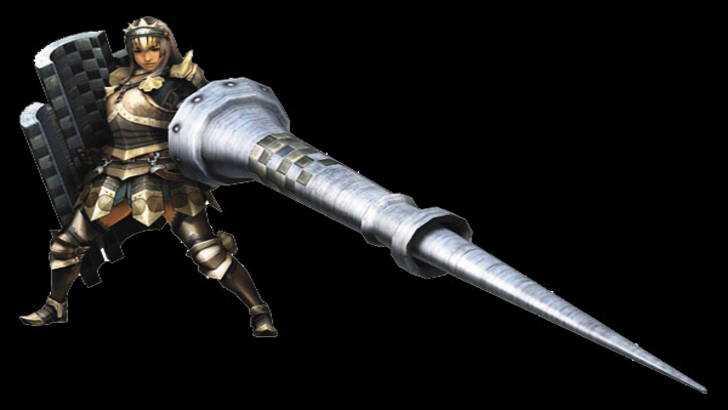
The Lance epitomizes the saying "a good offense is a great defense." With its long reach and large shield, it's the ultimate defensive weapon, capable of blocking most attacks and, with the right skills, even unguardable ones. Despite its limited mobility and attack variety, its damage output is considerable.
The Lance's playstyle resembles an outboxer, poking from a distance while safely guarded. Its primary attacks include forward and upward thrusts, chainable up to three times. The Counter mechanic, introduced in later versions, reinforced this outboxer identity, allowing hunters to close gaps with running charge and shield bash attacks.
Often considered "boring" due to its less flashy animations, the Lance's unique design rewards hunters for standing their ground. It transforms the hunter into a tank, offering a level of defense unmatched by its cousin, the Gunlance.
Light Bowgun

The Light Bowgun, a ranged weapon from the first generation, offers mobility and faster reload speeds due to its smaller size. This makes it easier to handle and theoretically safer than heavier weapons.
However, its mobility comes at the cost of firepower, with limited ammunition choices. Customization options, including long barrels, silencers, and scopes, allow for tailored gameplay.
In Monster Hunter 4, the "Critical Distance" mechanic added depth to ranged gameplay, requiring shots to be fired at the optimal distance for maximum damage, varying by ammunition type.
Monster Hunter World introduced the Wyvernblast mechanic, allowing hunters to plant bombs that detonate upon impact. The weapon also gained a slide maneuver post-shooting, enhancing its mobile, run-and-gun style and differentiating it from its heavier counterpart.
Despite its simpler design, the Light Bowgun has evolved into a robust weapon that remains easier to play than other ranged options while offering unique mechanics and specialties.
Heavy Bowgun

The Heavy Bowgun, introduced in the first generation, is the premier ranged weapon, offering high damage and a variety of special ammunition. Its size and weight, however, limit mobility, allowing only walking while drawn.
Unlike the Light Bowgun, the Heavy Bowgun offers flexibility with more ammunition types but sacrifices speed. It can be customized with attachments, including a shield for blocking attacks.
In Monster Hunter 3, the Siege Mode was introduced, enabling more shell firing without reloading. Monster Hunter World added the Wyvernheart and Wyvernsnipe special ammo types, which do not use inventory ammunition and recharge over time.
The Heavy Bowgun's gameplay involves careful preparation, as stronger ammunition must be crafted during hunts. Its design has remained focused on sheer firepower, with changes like different dodge rolls and attachments over the years.
Dual Blades
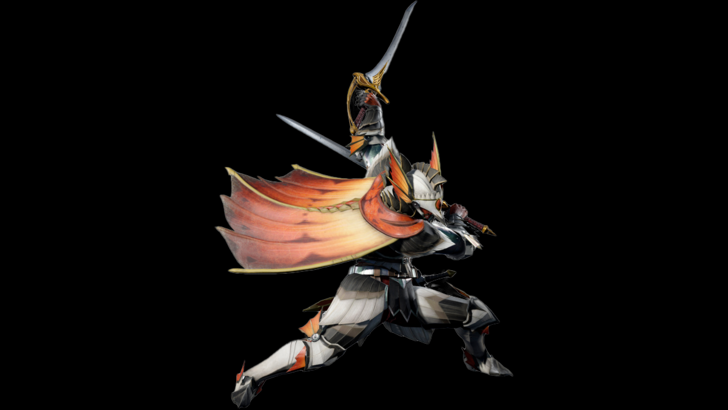
The Dual Blades are known for their speed and ability to inflict status ailments and elemental damage through multi-hitting attacks. Introduced in the Western release of the first game, they were not part of the initial Japan-only release.
Focused on speed and fluid combos, the Dual Blades surpass the Sword and Shield in offensive capability. While individual attacks are weak, their rapid succession accumulates significant damage.
The weapon's design emphasizes "death by a thousand cuts," with Demon Mode increasing damage and offering more offensive maneuvers, albeit at the cost of continuous stamina drain.
Monster Hunter Portable 3rd and Monster Hunter 3 Ultimate introduced the Demon Gauge, which fills with attacks in Demon Mode. When full, hunters can enter Archdemon Mode, granting new attacks and evasive maneuvers without stamina drain.
The Demon Dash, a movement tool exclusive to the Dual Blades, was further enhanced in Monster Hunter Generations Ultimate with the Adept Hunter Style, allowing perfect dodges that increase damage and enable attacking while dodging.
Despite minor changes, the Dual Blades maintain their core offensive playstyle, with Archdemon Mode being a significant evolution that enhances their potential.
Second Generation

The second generation introduced weapons that, while functionally similar to their predecessors, feature unique movesets and mechanics.
Long Sword
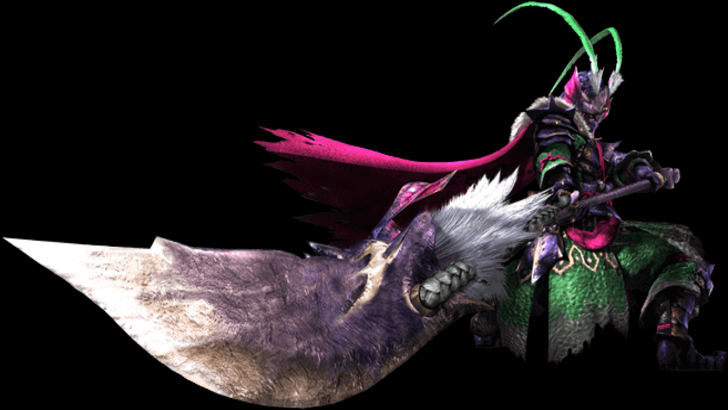
The Long Sword is celebrated for its fluid combos, high damage, and intricate mechanics. Introduced in Monster Hunter 2, it resembles the Great Sword but offers greater mobility and combo flexibility, albeit without a blocking ability.
The Long Sword's core mechanic is the Spirit Gauge, filled by landing attacks. When full, it allows access to the Spirit Combo, dealing significant damage. Monster Hunter 3 expanded this with the Spirit Roundslash finisher, which increased the Spirit Gauge's levels, offering progressive attack buffs.
Monster Hunter World popularized the weapon further by adding the Spirit Thrust Helm Breaker finisher and the Foresight Slash parry, enhancing its combo flow and defensive capabilities. The Iceborne expansion introduced the Iai Stance, providing faster Spirit Gauge filling and additional parry options.
The Long Sword has evolved from a combo-oriented weapon to one that emphasizes counters and fluidity, enabling dynamic playstyles that quickly reach peak performance.
Hunting Horn
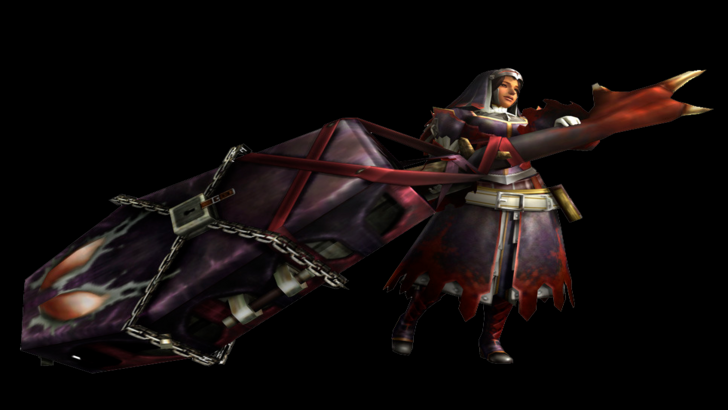
The Hunting Horn, introduced in Monster Hunter 2, is the series' support weapon, offering impact damage and beneficial effects through its Recital mechanic. By combining colored notes, hunters can activate various buffs, from attack and defense boosts to healing.
Similar to the Hammer, the Hunting Horn targets monster heads to stun them but trades some damage for its support capabilities. The Recital mechanic evolved throughout the series, with Monster Hunter 3 Ultimate allowing note-playing during attacks, improving its flow.
Monster Hunter World introduced song queuing, enabling multiple effects in a single recital, enhancing the weapon's offensive and supportive fluidity. The Iceborne expansion added Echo Notes, providing areas that grant buffs upon traversal.
Monster Hunter Rise overhauled the Hunting Horn, simplifying song activation and reducing the total song list, making it more accessible while sparking debate about its lost complexity. Despite this, the changes aimed to balance the weapon with others in the series.
Gunlance
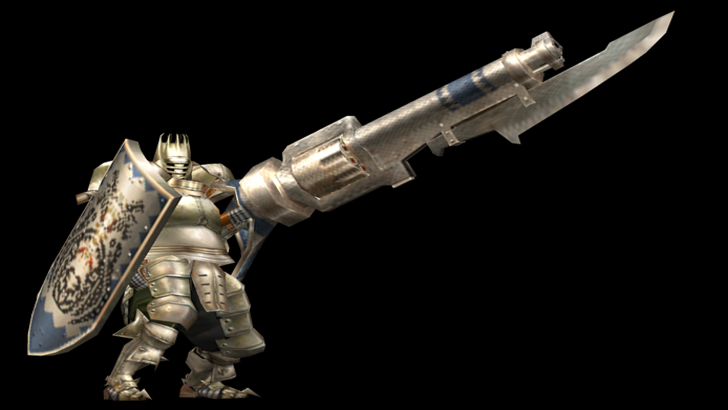
The Gunlance, introduced in the second generation, combines elements of the Lance and Bowgun, offering piercing attacks and explosive rounds with unlimited ammunition, recharged by reloading.
Unlike the Lance, the Gunlance focuses on cutting and slashing with finishers like the Wyvern’s Fire, a chargeable explosive attack. Its gameplay revolves around using Shelling Abilities, which vary by weapon.
Monster Hunter 3 enhanced its aggressive design with a quick reload mechanic and the Full Burst attack, leading to an infinite combo and transitions into the Wyvern’s Fire. Monster Hunter X added the Heat Gauge, which boosts physical damage but risks overheating.
Monster Hunter World introduced the Wyrmstake Shot, impaling monsters with an exploding stake. The Gunlance's unique mechanics demand balanced offensive strategies to avoid burning out its Shelling capabilities.
Bow
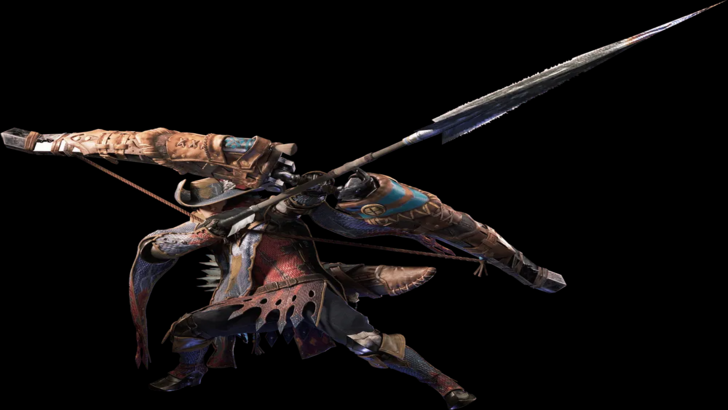
The Bow, introduced in Monster Hunter 2, is the most agile ranged weapon, specializing in close-to-mid-range combat with a hit-and-run style. It functions like a melee weapon, using combos and chargeable attacks that fire multiple arrows.
The Bow uses Coatings to enhance damage or inflict elemental and status effects. Its mobility and fluid combos are its strengths, with new attacks added throughout the series. Monster Hunter World simplified its Shot Types, integrating them into its universal moveset and introducing the infinite Close-Range Coating.
Monster Hunter Rise reintroduced Shot Types tied to charge levels, adding variety to its attacks. Despite its unique finishers, the overhaul in Monster Hunter World emphasized its aggressive, combo-heavy playstyle, distinguishing it from the Bowgun's straightforward shooting.
Third and Fourth Generation

Weapons introduced in Monster Hunter 3 and Monster Hunter 4 brought new mechanics, including the Insect Glaive's unique buff collection and morphable weapons that change during combos.
Switch Axe
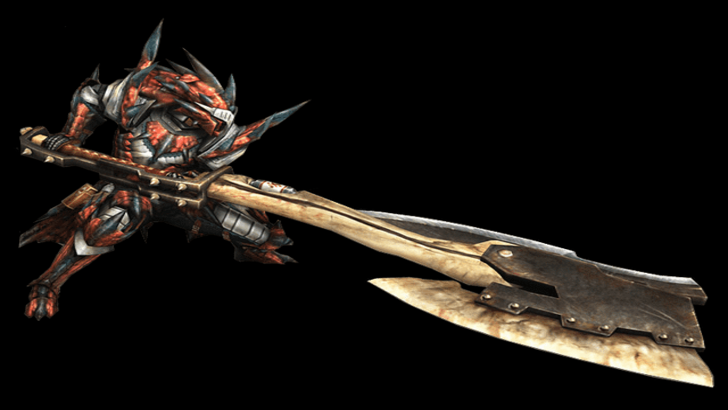
The Switch Axe, introduced in Monster Hunter 3, features two modes: Axe Mode, offering mobility and range, and Sword Mode, providing higher damage and access to Phials and the Elemental Discharge finisher. Initially, players had to unlock the weapon through a quest.
The weapon's design balances offense between modes, with Sword Mode's Amped state, introduced in Monster Hunter World, enhancing damage based on the Phial type. Monster Hunter Rise extended this state to both modes, encouraging form-switching for maximum damage.
The Switch Axe's form-swapping mechanics and explosive combat flow make it a unique addition to the series, despite its lesser popularity.
Insect Glaive
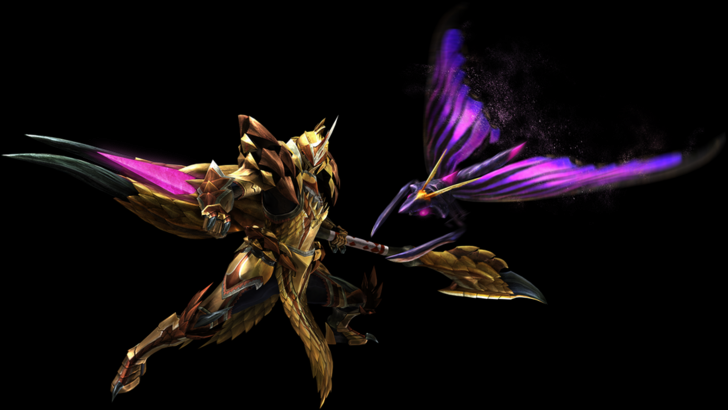
The Insect Glaive, introduced in Monster Hunter 4, is paired with a Kinsect that collects essences to grant buffs. The weapon excels in aerial combat and mounting monsters, a new mechanic in Monster Hunter 4.
Collecting red, white, and orange essences enhances attack, mobility, and defense, respectively. When all three are gathered, the buffs are stronger and last longer. The weapon's core gameplay focuses on quickly collecting these essences.
Monster Hunter World: Iceborne added the Descending Thrust finisher, while Monster Hunter Rise simplified the Kinsect and weapon upgrade system, introducing new Kinsect types. Despite its efficient gold upgrade system, the Insect Glaive remains a unique and accessible weapon with high aerial prowess.
Charge Blade

The Charge Blade, introduced in Monster Hunter 4, is a transforming weapon with Sword and Axe Modes. Sword Mode charges Phials, while Axe Mode uses them for the Amped Elemental Discharge. Known for its versatility and complex mechanics, it's considered one of the hardest weapons to master.
The Charge Blade relies on Guard Points to charge Phials and maintain offense. Transitioning between modes and understanding monster behavior are crucial for maximizing its potential. Despite its difficulty, the Charge Blade offers a rewarding experience for those who master it.
Will There Be More?

While Monster Hunter Wilds will feature fourteen weapons, more have been introduced in previous games that weren't released in the West. Given the series' longevity, future games might introduce new weapons or bring back existing ones. As a fan, I'm excited to see how the series continues to evolve, even if I'll likely stick with the Sword and Shield despite my intentions to try new weapons with each release.
You may also like...








